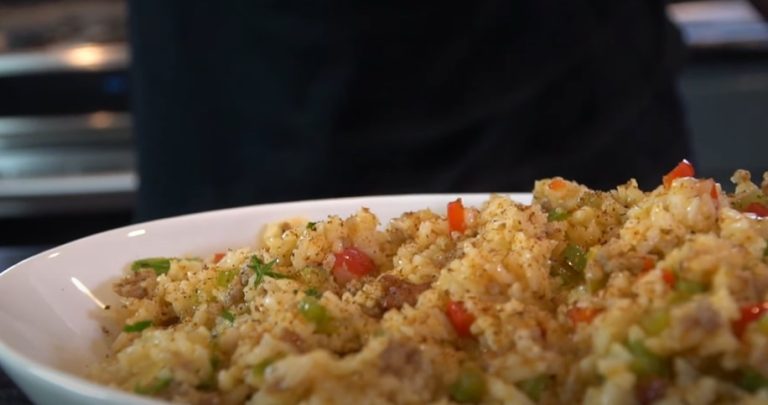Steak Seasoning: DIY Recipes for Perfectly Flavored Steaks at Home
Choosing the right ingredients is crucial for great steak seasoning. Fresh, high-quality spices and herbs can significantly enhance your steak’s flavor. Avoid pre-ground spices that can lose potency over time. Instead, opt for whole spices and grind them yourself for maximum flavor. Different cuts of steak may benefit from unique blends. For example, a ribeye might pair well with rosemary and garlic, while a filet mignon may shine with a simple blend of salt and pepper.
Salt, Pepper, and Beyond: Common Components
Salt and pepper form the foundation of most steak seasonings. Kosher salt is favored for its coarse texture, which helps draw out moisture and form a crust. Freshly ground black pepper adds a pungent kick, complementing the meat’s natural flavors. Beyond salt and pepper, explore other spices and herbs. Garlic powder, onion powder, and smoked paprika can add depth. Fresh herbs like rosemary, thyme, and oregano provide aromatic complexity. To enhance umami, consider adding soy sauce, Worcestershire sauce, or even a sprinkle of MSG.
How to Apply Great Steak Seasoning for Optimal Flavor
Dry Rubs vs. Marinades: Pros and Cons
Choosing between dry rubs and marinades impacts the steak’s texture and flavor. Dry rubs use a blend of spices and herbs. They create a crust when seared, locking in juices. Marinades, often liquid-based, tend to incorporate ingredients like vinegar, oil, and herbs. They tenderize the meat but may not form a crispy outer layer.
-
Dry Rubs
- Pros: Produces a flavorful crust, enhances natural meat flavors, easy to apply
- Cons: May not penetrate deeply, risks uneven seasoning if not applied thoroughly
-
Marinades
- Pros: Infuses flavors deeply, tenderizes tougher cuts, versatile in flavor profiles
- Cons: Longer preparation time, risks making the meat too soft, can prevent crust formation during cooking
Timing Your Seasoning: Before, During, or After Cooking?
The timing of seasoning significantly affects flavor and texture. Consistent seasoning habits ensure the best results.
-
Before Cooking
- Applying seasoning 30-60 minutes before cooking allows flavors to penetrate. Salt draws out moisture initially but then reabsorbs it, helping tenderize the steak.
-
During Cooking
- Adding seasoning while cooking provides an immediate flavor boost. Basting with herb butter during grilling enhances the taste, especially for thicker cuts.
- Seasoning right after cooking enhances the steak’s outer layers. Adding a sprinkle of finishing salt or freshly cracked pepper after resting a steak boosts taste without impacting juiciness.
Engage with the seasoning process to elevate your steak’s flavor and texture, considering these factors mentioned under each method.
Top 5 Great Steak Seasoning Mixes Reviewed
Classic Blends
Classic blends enhance steak’s natural flavors using time-tested combinations. Montreal Steak Seasoning remains popular, featuring coarse salt, cracked black pepper, garlic, and paprika. You can find it as a staple in many households. Kansas City Steak Seasoning, another classic, often includes brown sugar, kosher salt, black pepper, and chili powder. This provides a sweet and spicy balance.
Chimichurri Seasoning, though often linked with Argentine cuisine, has gained global usage. It incorporates parsley, garlic, oregano, and red wine vinegar. You can use it as a dry rub or mix it with olive oil for a marinade. Another blend to consider is the Santa Maria rub, originating from California. This one uses garlic powder, black pepper, salt, and dried parsley. These blends form a solid foundation for any steak preparation.
Innovative and Bold Mixes
Innovative and bold mixes push boundaries, offering unique taste experiences. Espresso Rub includes ground coffee, brown sugar, chili powder, and salt. This creates a deep, rich flavor with a hint of bitterness that pairs well with beef. Another intriguing option is the Cocoa Chili Rub. This mix uses unsweetened cocoa powder, smoked paprika, cumin, and cayenne pepper, providing a smoky, spicy twist.
Herbes de Provence blend, though traditional in French cooking, surprises when used on steak. It includes rosemary, thyme, fennel, and basil, adding a fragrant, floral element. You might also enjoy the Chipotle Garlic blend, which features dried chipotle peppers, garlic powder, onion powder, and cilantro. This delivers a smoky, spicy, and slightly tangy flavor profile.
Asian-inspired blends, like the Korean BBQ Seasoning, often include soy sauce powder, garlic, ginger, and sesame seeds. These mixes create a savory, umami-rich coating that’s both complex and harmonious. Incorporating these innovative blends can elevate your steak seasoning game, introducing new and exciting flavors.
DIY Great Steak Seasoning Recipes
Crafting the Perfect Blend at Home
Creating your own steak seasoning blend at home allows you to customize the flavors to suit your taste. Start with a base of kosher salt and black pepper, which are essential for drawing out the meat’s natural flavors. Add garlic powder and onion powder for a savory depth. Include paprika for a hint of smokiness and color. Enhance the blend with crushed red pepper flakes for a bit of heat.
For a more complex flavor profile, consider including dried herbs like thyme and rosemary. Both herbs complement the richness of the steak. If you prefer a touch of sweetness, add a pinch of brown sugar. Using smoked paprika instead of regular paprika can provide an extra layer of flavor that mimics the taste of grilling over an open flame. Always mix these ingredients thoroughly to ensure an even distribution of flavors.
Adjusting Spice Levels for Personal Preference
When making your seasoning blend, adjusting spice levels allows you to control the final taste. If you enjoy a spicier flavor, increase the amount of crushed red pepper flakes or add ground cayenne pepper. If you prefer a milder seasoning, reduce the red pepper and consider using sweet paprika instead of smoked.
Garlic and onion powders can be adjusted to match your preferred intensity of savory notes. Adding more of these spices can create a robust, hearty flavor profile. For those who enjoy herbal elements, increasing the amount of thyme or rosemary can enhance the aromatic quality of your blend.
It’s essential to taste your seasoning blend before using it on the steak. Do this by sprinkling a small amount on a piece of cooked meat. Adjust the ingredient levels as needed to achieve the perfect balance for your palate. This flexibility ensures that your great steak seasoning is tailored to your individual taste, enhancing your overall dining experience.
Conclusion
Creating the perfect steak seasoning is an art that enhances your dining experience. By using fresh ingredients and customizing your blends, you can tailor the flavors to your liking. Whether you prefer a spicy kick or a more mellow taste, experimenting with different spices lets you find the perfect balance. Remember to test your seasoning blend before cooking to ensure it meets your expectations. With the right approach, you’ll elevate your steak to a whole new level of deliciousness. Happy grilling!






